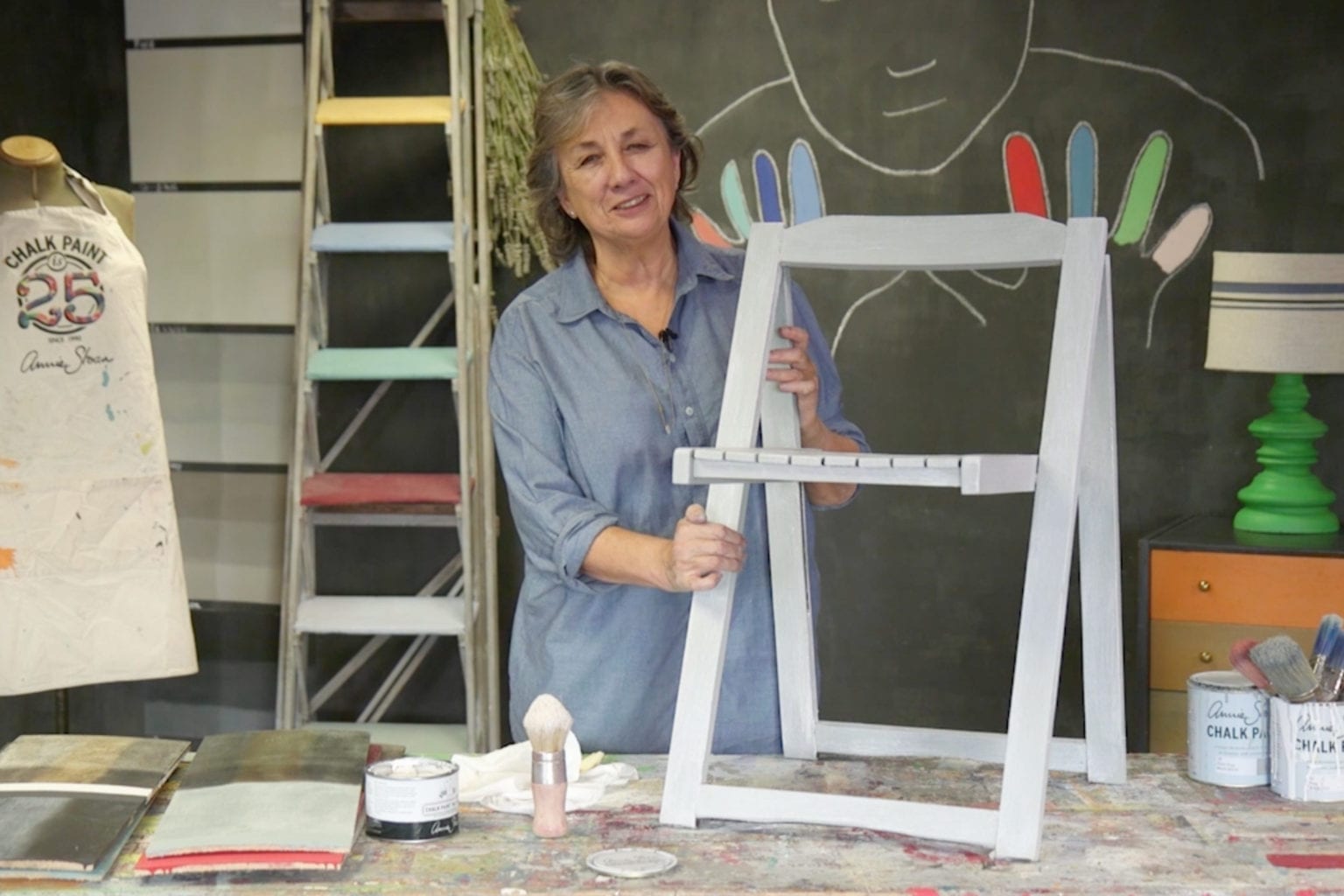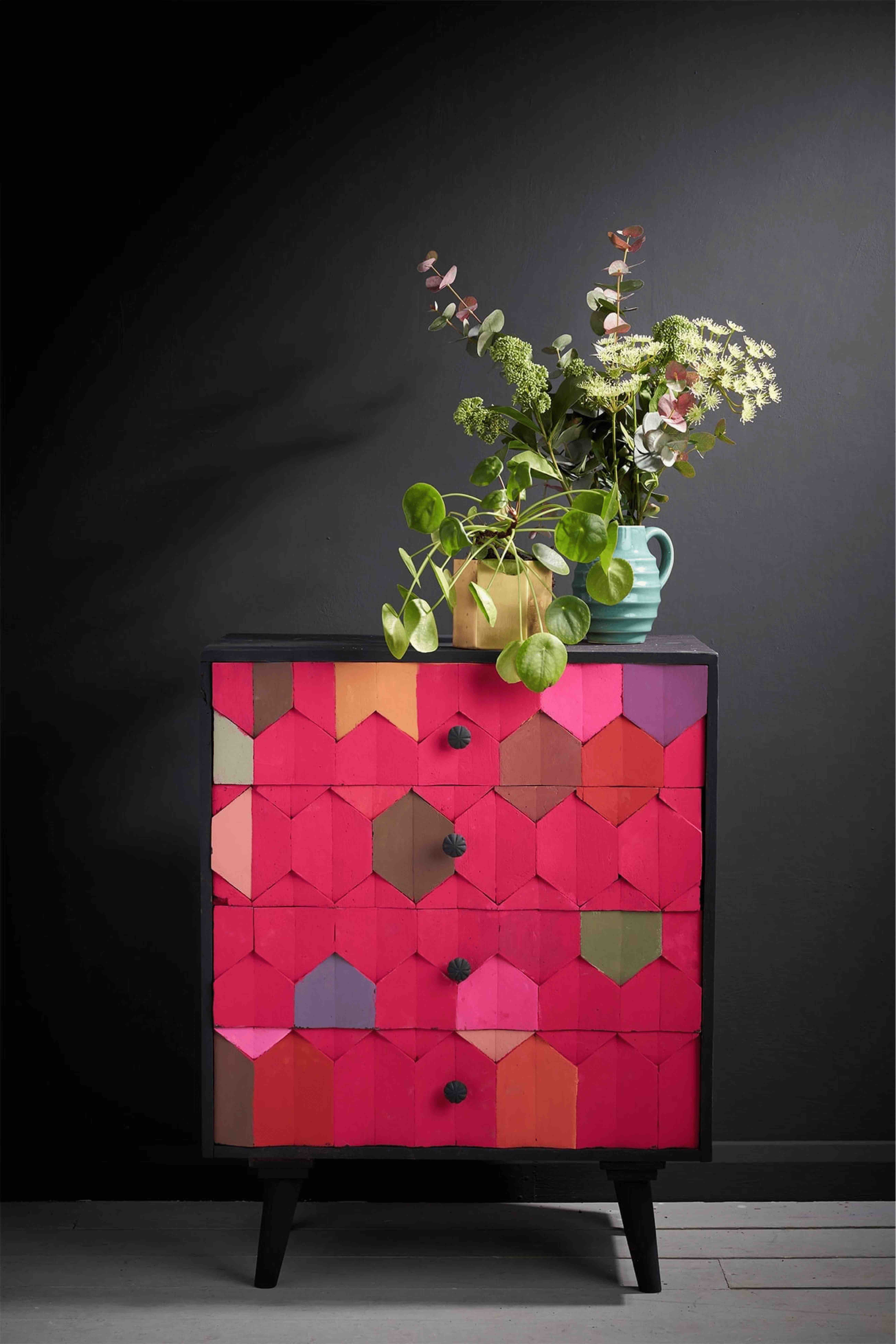- Znajdź mebel, który ma mocno widoczne słoje. Ta technika świetnie nadaje się dla dębowych mebli, szczególnie tych nielakierowanych
- Nabierz porządną ilość białego wosku Chalk Paint™ White Wax na pędzel do wosku Chalk Paint™ Wax Brush.
- Nałóż wosk bezpośrednio na drewno, starając się dotrzeć pędzlem w każde zagłębienie oraz wetrzeć go porządnie w rysunek słojów.
- Użyj czystej bawełnianej ściereczki aby usunąć nadmiar wosku z wierzchu. Wosk powinien pozostać głównie w zagłębieniach i pomiędzy słojami.
- Jeżeli chcesz dostosować/zmniejszyć ilość białego wosku na jakimkolwiek fragmencie mebla, wystarczy usunąć jego nadmiar korzystając z bezbarwnego wosku Chalk Paint™ Clear Wax. Nabierz trochę bezbarwnego wosku na bawełnianą ściereczkę i zbierz nią nadmiar białego wosku z powierzchni. Pracuj dopóki wosk jest jeszcze mokry i elastyczny.
- Pozwól aby wosk się utwardził. Wosk dojrzewa do swojej pełnej odporności 5 do 21 dni (w zależności od temperatury i wilgotności w pomieszczeniu). Jeżeli musisz wyczyścić woskowany przedmiot, użyj do tego po prostu wilgotnej szmatki.
I’m going to show you how to bring out the grain in this beautiful frame and if you find anything which is really oaky and got a strong grain to it, then this is the method to do it.
Mine is a really beautiful frame. It’s got a lot of… you can hear, it’s very, very textured! So what I’m going to use is my White Wax. Here’s my brush. This is going to take a little bit of work because the wood is very dry, so I have to really push the brush and the bristles in to all the grain, all the three-dimensional parts. And the wax is really absorbing in.
This is a technique which copies the old whitewash look, but we’re using wax to achieve it. People have called it pickling, and liming itself has just become its own thing. So all the old oak beams in the old houses would have been whitewashed and then they’d get this beautiful patina.
So here’s a nice bit here because there’s a lot of lovely wood grain, that’s going to really look good. If you’ve got a piece of wood which is oak, but it’s got a varnish on it, you will be able to achieve this look but it won’t be nearly so strong. This is going to be much stronger looking, or more prominent rather. And now I’m going to get my cloth out, just a piece of cotton cloth, and start to wipe it.There’s the very nice bit up here, that is really beautiful!
At this stage I can still play about with it, so I’m going to take a little bit of Clear Wax and maybe just try along the edge, and that will just take it… it’s like an eraser: it rubs it away. And it might just make it more apparent. I could just do the edge there and keep this bit whiter.
So this is my finished piece, it’s brought out the grain of the wood beautifully I think and I really, really love it. I might even just use it as it is, no picture inside!


